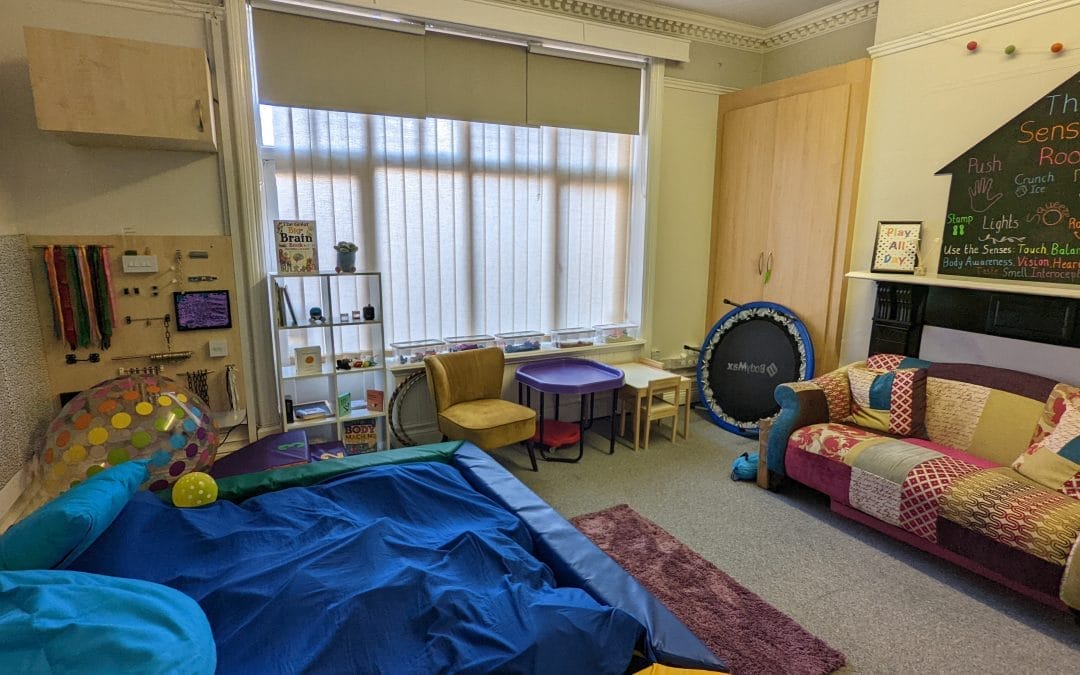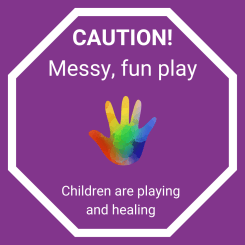The Purple House Clinic Leicester Launches New Sensory Facilities
♥
New specialist facilities
The Purple House Clinic, Leicester are proud to launch specialist sensory facilities, housed within a new dedicated sensory clinic room. This fantastic facility is aimed at helping children with autism or complex trauma who often experience sensory processing difficulties alongside challenges with emotions, behaviour and interpersonal functioning.
The initiative evolved naturally from the specialist work already being undertaken at the clinic with adopted children who have complex trauma linked to early life experiences. The clinicians at Purple House recognised the difficulties that these children often have with sensory regulation. It became apparent that sensory assessments, exploring their sensory needs could offer sensory strategy recommendations and that sensory integration therapy could address the regulation challenges that they experience.
♥
A space fit for purpose
The new sensory room at the Leicester Clinic is a space that’s been designed with its aims and purpose firmly in mind. When entering the purpose-built sensory room at Leicester Purple House Clinic, you feel your inner child squeal with delight: ball pit, swing harness, sand pits, bubbles, glitter jars, gigantic rainbow inflatables and best of all, things children are forever told not to touch: (faux) light switches and door locks.
There’s even a quiet tent area, to settle down with a blanket, a teddy and a good book. The painted mural looks like a meadow on a fantastical summer’s day: towering sunflowers, daisies dotted through Van Gogh’s irises, clouds rolling on the horizon. It feels as though it might be possible to step right into the picture, just like in Mary Poppins.
♥
Harnessing the power of play
Victoria Bayes, Occupational Therapist and Sensory Integration Practitioner explains how the children that visit are encouraged to play and explore on their terms. “Everything is child-led,” explains Victoria. The sensory room provides opportunities for many different types of sensory play – play that is messy, soft, textured, swinging, bouncy and fun- all within a safe environment. Many of the children are adopted, recovering from trauma, autistic and/or struggling with sensory processing. As such, the principle of ‘sensory play on your terms’ is an important one.
♥
Assessing sensory profiles
All play activities are discreetly observed and form part of a full sensory assessment, offered at Purple House Clinic, Leicester. Parents are also asked about difficulties with everyday self-care activities (Activities of daily living (ADL)) such as dressing, showering, toileting and eating. They are asked about the play activities that the child enjoys doing at home. An understanding of how the child gets on at school is either discussed or school-based observations offer a holistic view of each child In addition, detailed questionnaires pinpoint sensory strengths or difficulties.. Parents are then offered a full report, with sensory strategies to help with everyday activities at home and school. Sometimes a further assessment is needed to explore Praxis (an ability to come up with an idea, plan a motor task and execute movements ) to further establish sensory needs.
♥
Sensory therapy
Sensory therapy sessions can last several months, up to one year. Victoria explains that sensory processing skills provide the foundations for development and learning. If a child is dysregulated, it can impact on all aspects of child development including communication, language, problem-solving and learning. Sensory-processing is the foundation block; central to how children see and learn about the world, according to neuroscience. Therapy can help sensory regulation , helping children to flourish.
♥
Seven wonders of the world: eight senses
Victoria explains that there are in fact eight senses: visual, auditory, tactile, olfactory, gustatory, vestibular, proprioception and interoception. Many of the children she sees are adopted and have experienced childhood traumas. She recalls one young child who hated being touched, impacting on many aspects of her life, for example, she had only had two haircuts throughout her life. Through intensive sensory therapy to support overall regulation, the child was able to build her tolerance of being touched which had a wide reaching impact (including being able to go for a haircut!). Other children with Autistic spectrum disorder (ASD) have benefited from better proprioception, using various techniques and activities including bouncing in the ball pit. Indeed, for children who needed increased vestibular stimulation, sensory therapy has been more appropriate than talking therapies.
♥
Empowerment from sensory-regulation
Many children leave sensory therapy with future proof- strategies for sensory regulation. Victoria said parents have often commented on how their children have “less meltdowns” and with the meltdowns they do have, they reach a calm space quicker. Others find understanding sensory systems empowering: validating their difficulties and experiences.
“There are no seven wonders of the world in the eyes of a child. There are seven million,” said Walt Streghtiff. Leicester Purple House Clinic’s sensory facility offers a gateway to sensory play, allowing children to explore in a safe place. The wonder of play allows children recovering from trauma, with complex sensory needs, the space to heal.
♥
To learn more about The Purple House Clinic Leicester please click here:




